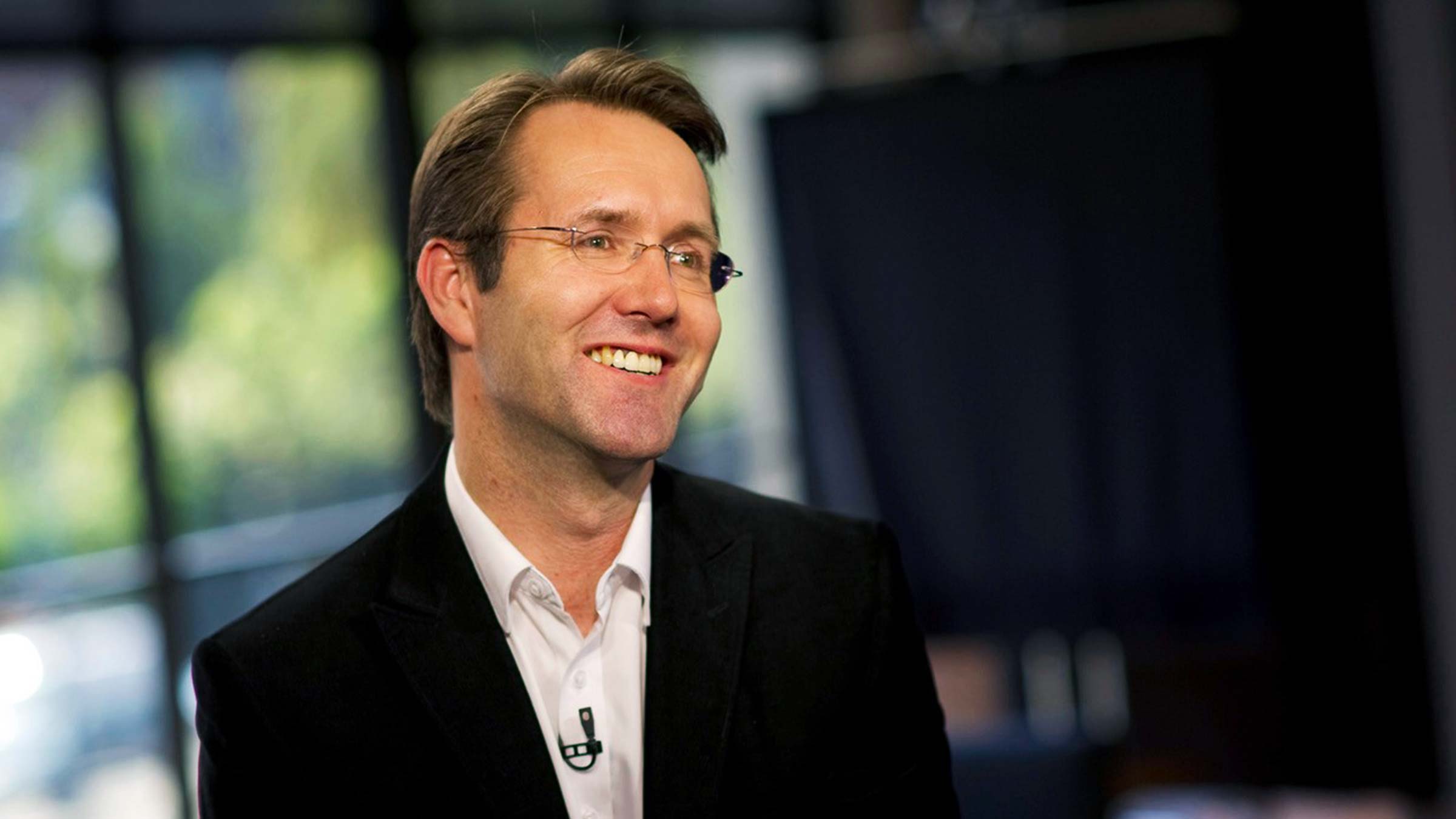Not many sixteen-year-olds spend their free time interviewing business leaders. But Andrew Fisher, today a plural NED and one of the UK’s most innovative digital minds, was one such sixteen-year-old.
“I’ve always been fascinated by industry,” he tells me when we caught up last week, “and I’ve always had clarity that I wanted to be involved in business leadership.” It was this clarity which drove Andrew to walk into Pilkington Glass, notepad in hand, to interview its board of directors, and which laid the foundations for the start of an incredibly impactful executive and non-executive career.
Andrew is best known for his integral role in building Shazam, one of the most recognisable mobile apps and, indeed, brands in the world. Brought in by the company’s investors as CEO in 2005, Andrew is credited with growing the startup to an astonishing one billion users, before selling the company to Apple in 2018.
After eight years as CEO and five as Executive Chairman, two years ago Andrew decided to go plural. Today, he holds a number of non-executive positions at some of the consumer-facing sector’s most exciting companies, where he provides invaluable insights at a time of rapid digital transformation.
“I’ve always been fascinated by industry, and I’ve always had clarity that I wanted to be involved in business leadership.”
It was a privilege to sit down with Andrew last week and hear his story. As with all my Q&As, I asked him to start at the very beginning.
“My father was in the armed forces, so I lived in a new country and went to a new school every two years,” he began. Rather than considering this a disruptive way to live, Andrew tells me that changing schools every two years was a great preparation for later life, reflecting that constantly meeting new people and settling into new environments provided some valuable life skills.
After school, Andrew studied economics at Loughborough University, before completing a management training programme with Electrocomponents and landing his first job with one of its subsidiaries, RS Components, in 1993. It was here that Andrew completed his first digital transformation project, to develop and launch the first catalogue in Europe on a CD-ROM, making it easier for users to search and order the parts they wanted.
This early example of user-driven digitisation was spearheaded by Andrew’s first boss, Electrocomponents’ chief executive Robert Lawson. “He was an exceptional business leader,” Andrew tells me, “not just for his innovative vision but also for his management style. He spent a lot of time with the graduate intake, getting to know us on a one-to-one basis. He understood how to invest in us and gave us the space to grow, and by giving us meaningful responsibility, we were given the opportunity to make a real impact on the business.” Within 18 months, Andrew and the rest of his team had distributed over one million copies of the electronic catalogue.
Andrew’s time at Electrocomponents was followed by a number of roles leading large-scale digital transformation programmes. “Throughout this time there was a whole new wave of innovation,” Andrew tells me, “the internet was coming into existence and we were learning that going to work in a shirt and tie was not necessarily conducive to disruptive thinking.”
In 2005, Andrew was hired by Shazam. Like all businesses, Shazam had its growing pains. Let’s not forget that 2005 was only five years after the dotcom boom and bust! He tells me: “I joined at a point when the startup had nearly run out of funding, and in those early days we had to fight to survive. Shazam provided innovative technology that was well ahead of its time, but how often does anyone need to ‘name that tune’? We had to work out how to diversify our product.”

So diversify they did. Over his 13 years as CEO and Executive Chairman, Andrew built out Shazam to provide ecommerce services, so users could buy music, concert tickets, and merchandise, resulting in over 15 percent of all worldwide music sales being transacted through the platform. Andrew oversaw the launch of a new business unit focused on interactive television advertising, allowing millions of consumers in North America to ‘Shazam’ TV adverts, turning 30 second spots into several minutes of interactive engagement for brands. The brand even has its own game show, Beat Shazam, in which players aim to identify songs before the app.
Looking back, Andrew puts Shazam’s initial success down to the combination of four macroeconomic trends. “It was the emergence of smartphones, unlimited data tariffs, content digitisation through iTunes and pricing parity for mobile transactions with online purchases,” he tells me.
But beyond individual factors, Shazam’s success was all about timing.
“The biggest challenge with disruptive technology is not the ideation or invention, but achieving mass market adoption. You have to catch the right wave at the right time, and also know when to get off the wave and look for the next one, as it is so easy to be leapfrogged by innovation.”
“It’s all about catching the wave,” Andrew explained, “the biggest challenge with disruptive technology is not the ideation or invention, but achieving mass market adoption. You have to catch the right wave at the right time, and also know when to get off the wave and look for the next one, as it is so easy to be leapfrogged by innovation.” This, Andrew explains, is one of the key considerations for businesses today: not just whether or not to adopt technology, but finding the right time to use it for the benefit of the customer.
To Andrew, digital-mindedness is not simply about specialist expertise. “It’s so much more than technology. It’s a mindset. It’s about wanting to change people’s behaviour and enrich their lives.”
Our conversation turns to Andrew’s plural non-executive career. After becoming Executive Chairman at Shazam in 2013, Andrew joined the boards of Moneysupermarket, M&S, Merlin Entertainment, and most recently Rightmove as Chair. I wonder – why these businesses?
“I’m attracted to highly recognised brands and businesses going through periods of transformation,” he tells me. “Really, it’s about delivering magic. At Shazam, we were helping people find music; at Moneysupermarket, we are deploying technology to save people money; at Merlin, it was the magic of experiencing an attraction. I love enriching people’s lives, whether that’s through selling delicious food and delighting customers with M&S or through helping people find their dream home with Rightmove.”
Andrew’s passion for his plural career is palpable. “I love the breadth of experience. Today, I get my energy from working on different missions with different people. I’m not sure I could ever go back to the singular focus required of a CEO.”
Andrew tells me people can find it perplexing that he sits on big corporate boards after growing Shazam (when his wardrobe consisted only of black jeans and t-shirts). “But it’s about the opportunity,” he tells me, “and at the moment, the most exciting place to be is in the consumer sector.”
Quick fire questions
Born?
In Wendover. My dad was a Wing Commander in the RAF and my mum a primary school teacher. Today, I’m married to Sally who works in the NHS and we have two sons, both at university.
Who are your mentors?
I’ve had the privilege to be mentored by some of our very best business leaders. Sir John Sunderland, former CEO and Chairman of Cadbury Schweppes; Brent Hoberman, who was on my Board at Shazam; Archie Norman at Marks and Spencer; and Bruce Carnegie Brown, Chairman of Lloyds.
Important film and book?
In 2011, I was taken by the Founder of MTV to the Tribeca Film Festival to see a documentary called Love Hate Love. It was about three individuals whom I met at the screening, who had each been affected by a major world disaster, and each went on to do great things in the names of their loved ones: a mother who lost her son in the World Trade Centre; a young woman who lost her sister in the London bus bombing and a young Australian man who lost both of his legs in the Sari Club bombing in Bali.
My book is The 100-Year Life: Living and working in an age of longevity. Lynda Gratton and Andrew Scott outline the challenges and intelligent choices that all of us should make to turn our longer life expectancy into a gift and not a curse. I especially like the idea of pivoting through different careers.
Your legacy?
I strive to work with teams that can deliver truly magical experiences that bring people happiness.
Moira.benigson@thembsgroup.co.uk | @MoiraBenigson | @TheMBSGroup









